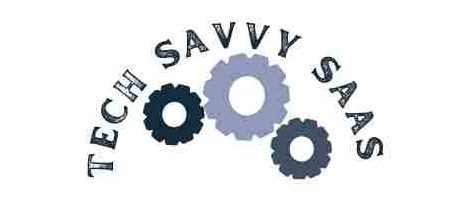The rapid evolution of technology significantly alters our digital landscape, constantly reshaping how we interact, work, and think. At its core, Navigating the Tech Wave involves not just adapting to these changes but proactively using them to drive digital transformation and technological advancements. This concept is crucial for modern industries aiming to not only survive but thrive amid fast-paced changes. This article delves into the latest tech trends that are transforming various sectors and explores how businesses can harness these innovations for operational efficiency and success.

What Are the Key Technological Trends in 2025?
In 2024, several technological trends will be at the forefront of shaping the new technological landscape. These include artificial intelligence (AI) advancements, blockchain technology, Internet of Things (IoT) expansion, and 5G deployment. Each of these trends brings transformative potential across multiple domains.
- AI advancements are not just about smarter machines but about integrating deep learning systems into daily business processes to enhance decision-making and efficiency. A 2023 report by McKinsey noted a 25% increase in AI adoption in industries such as retail and manufacturing, directly correlating with a rise in productivity.
- Blockchain technology is redefining transaction transparency and security, particularly in sectors like finance and supply chain management. For example, IBM’s blockchain solutions have been shown to reduce transaction disputes by over 30% in logistics-focused businesses.
- The expansion of the IoT is making cities smarter and factories more efficient. A study by the University of Cambridge outlined how IoT applications could reduce energy usage in urban environments by up to 20% through intelligent real-time analysis.
- 5G deployment is crucial for supporting these technologies and providing the necessary bandwidth and speed. Verizon’s latest reports indicate that 5G is now enhancing connectivity in over 1,500 cities, paving the way for advancements in both mobile computing and AI operations.
Real-life applications of these technologies are evident in the strategies employed by leading companies. Members of the Forbes Technology Council, for example, frequently share success stories such as using AI to optimize customer service responses or blockchain to secure medical records, demonstrating substantial improvements in operational efficiency.
How Are Emerging Technologies Impacting Industry Standards?
Emerging technologies are setting new benchmarks across various industries, significantly altering the business landscape. Cloud computing and big data analytics are two such technologies that are reshaping industry standards.
- Cloud computing has shifted the IT infrastructure paradigm, allowing businesses like Amazon and Microsoft to offer scalable solutions that adapt to changing demand without the need for substantial physical infrastructure investments. According to Gartner, by 2025, over 80% of companies will operate in a cloud-first environment, reducing operational costs by up to 40%.
- Big data analytics plays a pivotal role in understanding consumer behavior and optimizing business operations. Retail giants like Walmart and Target use big data to analyze customer preferences and manage inventory, leading to a reported 15% increase in customer satisfaction and a 20% growth in revenue.
Leadership insights from world-class CIOs and tech executives, often part of exclusive groups such as the Forbes Technology Council, underline the importance of adopting these technologies. They emphasize that staying ahead of the tech curve is not just about adopting new systems but also about transforming organizational culture to embrace continuous learning and agile methodologies.
Strategies to Harness Technology for Business Growth
In today’s rapidly evolving tech landscape, staying agile and adaptive is crucial for any business aiming to thrive. Agile methodologies and continuous learning are pivotal in maintaining flexibility and responsiveness to change. Here are some strategies to help businesses stay ahead:
- Implement Agile Methodologies: Agile practices allow organizations to be more responsive to changes and better equipped to manage complexity. For example, Spotify’s squad model divides their workforce into autonomous groups that focus on different aspects of the product, enhancing both speed and creativity in development. Research from the Project Management Institute (PMI) shows that companies that embrace agile methodologies see a 27% higher success rate in their projects compared to non-agile firms.
- Foster a Culture of Continuous Learning: Encouraging ongoing education and skill development can keep a workforce relevant and innovative. AT&T’s significant investment in employee training programs—about $30 million annually—aims to equip staff with new skills for handling emerging technologies, resulting in a workforce that is versatile and forward-thinking.
- Embrace a Growth Mindset: Companies that cultivate a growth mindset among their employees see challenges as opportunities to improve and innovate. Microsoft’s shift to a growth mindset under CEO Satya Nadella has been linked to their renewed market presence and innovation drive, with a significant uptick in cloud service adoption contributing to a 14% increase in fiscal revenue.
How Should Companies Invest in the Right Technology?
Deciding where to allocate resources for tech investments is critical and can determine a company’s competitive edge and operational efficiency. The choice between adopting new technologies early and waiting to see their market viability can be strategic.
- Assessing ROI and Compatibility: When evaluating new technologies like Infrastructure as a Service (IaaS) and Platform as a Service (PaaS), businesses must consider potential ROI and how well the technology integrates with existing operations. Amazon Web Services (AWS) and Microsoft Azure offer robust examples of how cloud services can be scaled and customized to fit different business needs, offering considerable cost savings and increased operational flexibility.
- Risks and Rewards of Early Adoption vs. Late Entry: Early adopters of technologies like quantum computing and spatial computing can gain a significant competitive advantage if these technologies take off. For instance, Google’s early experiments with quantum computing suggest potential breakthroughs in processing speeds that could revolutionize fields like cryptography and AI. However, the risks include high initial costs and the possibility of investing in a technology that doesn’t reach commercial viability. Conversely, late adopters might benefit from observing market response and technology stabilization but risk falling behind in innovation.
Predicting the Future of Tech and Business Alignment
As we look ahead, the intersection of technology and business is set to transform with groundbreaking developments in areas like climate technology and quantum computing. These advancements not only promise to bring new opportunities but also pose challenges that require strategic foresight and innovation.
- Climate Tech’s Impact on Industries: Climate tech is rapidly becoming a focal point for businesses looking to mitigate environmental risks while capitalizing on new market opportunities. Technologies like carbon capture and storage (CCS) and advanced renewable energy systems are pivotal. According to the International Energy Agency (IEA), the market for renewable energy installations is projected to grow by 50% by 2025. Companies like Tesla and Vestas are leading the way, leveraging these technologies to not only reduce carbon footprints but also drive substantial economic gains. Tesla’s Gigafactories, for instance, aim to slash battery costs by 30%, making electric vehicles and renewable energy solutions more accessible.
- Quantum Computing’s Role in Future Business Operations: Quantum computing holds the promise of solving complex problems millions of times faster than classical computers. Industries ranging from pharmaceuticals to finance are eyeing quantum computing to revolutionize areas such as drug discovery and algorithmic trading. A study by Boston Consulting Group predicts that quantum computing could create up to $850 billion in annual value by 2040. Companies like IBM and Google are investing heavily, with Google achieving ‘quantum supremacy’ by performing a calculation in 200 seconds that would take the world’s most powerful supercomputer 10,000 years.
How Can Businesses Prepare for Future Tech Disruptions?
To navigate the evolving tech landscape, businesses must adopt forward-thinking strategies that prioritize data-driven decision-making and cybersecurity.
- Emphasizing Data-Driven Decision-Making: In the digital age, leveraging big data and analytics is essential for informed decision-making and staying competitive. For example, Netflix uses big data to tailor content recommendations and optimize streaming quality, significantly enhancing customer satisfaction and retention. The company’s investment in data analytics technologies has led to a reduction in churn by approximately 25%.
- Prioritizing Cybersecurity in Strategic Planning: As digital technologies permeate deeper into business operations, the need for robust cybersecurity measures becomes more critical. With cyberattacks becoming more sophisticated, investing in advanced security infrastructure and training is non-negotiable. For instance, IBM’s annual investment in cybersecurity exceeds $200 million, focusing on innovations like AI-driven threat detection systems, which have reduced breach detection times by up to 30%.
Key Takeaways
- Embrace Emerging Technologies: Stay ahead by integrating technologies like AI, IoT, blockchain, and 5G. These are not just trends, but fundamental drivers of future business success.
- Adopt Agile Methodologies: Implement agile frameworks to enhance flexibility and responsiveness to change, ensuring your business can quickly adapt to new technological advances.
- Foster Continuous Learning: Cultivate a culture of ongoing education and skill development within your organization to keep pace with technological changes.
- Invest Wisely in Tech: Evaluate potential ROI and ensure compatibility with your business model when investing in new technologies, especially in transformative areas like quantum computing and cloud services.
- Prepare for Tech Disruptions: Develop strategies that anticipate and mitigate the impacts of tech disruptions, focusing on robust data analytics and advanced cybersecurity measures.
- Leverage Data-Driven Decision Making: Utilize big data and analytics to make informed decisions that can lead to enhanced operational efficiency and competitive advantage.
- Prioritize Customer Experience: Integrate technologies that improve customer service and satisfaction, thereby driving loyalty and revenue.
- Maintain Ethical Standards: As you innovate, keep ethical considerations at the forefront of your technology adoption strategies to ensure compliance and maintain public trust.
Conclusion
Navigating the tech wave is essential for continued business success in our increasingly digital world. The rapid pace of technological advancement offers immense opportunities for those who are prepared to embrace and harness these changes. As business leaders, it’s crucial to not only adapt to these changes but also to lead them, ensuring that your strategies are aligned with the latest innovations.
Embrace these technological shifts with confidence and a proactive mindset, while always upholding ethical standards and focusing on excellence in customer service. By doing so, you can ensure that your business not only survives but thrives in the tech-driven future. Let this wave of innovation propel your business forward, turning potential challenges into avenues for growth and new possibilities.
More Post
- The Digital Renaissance: The Evolution of Technology in the 21st Century
- How Are Cutting-Edge Technologies Fundamentally Transforming Business Models?
- Tech Spotlight: Trends Shaping the Digital Era
- Innovation Unleashed: Exploring the Hottest Trends in Tech
- What Are Next-Gen Solutions in the Tech Industry?





